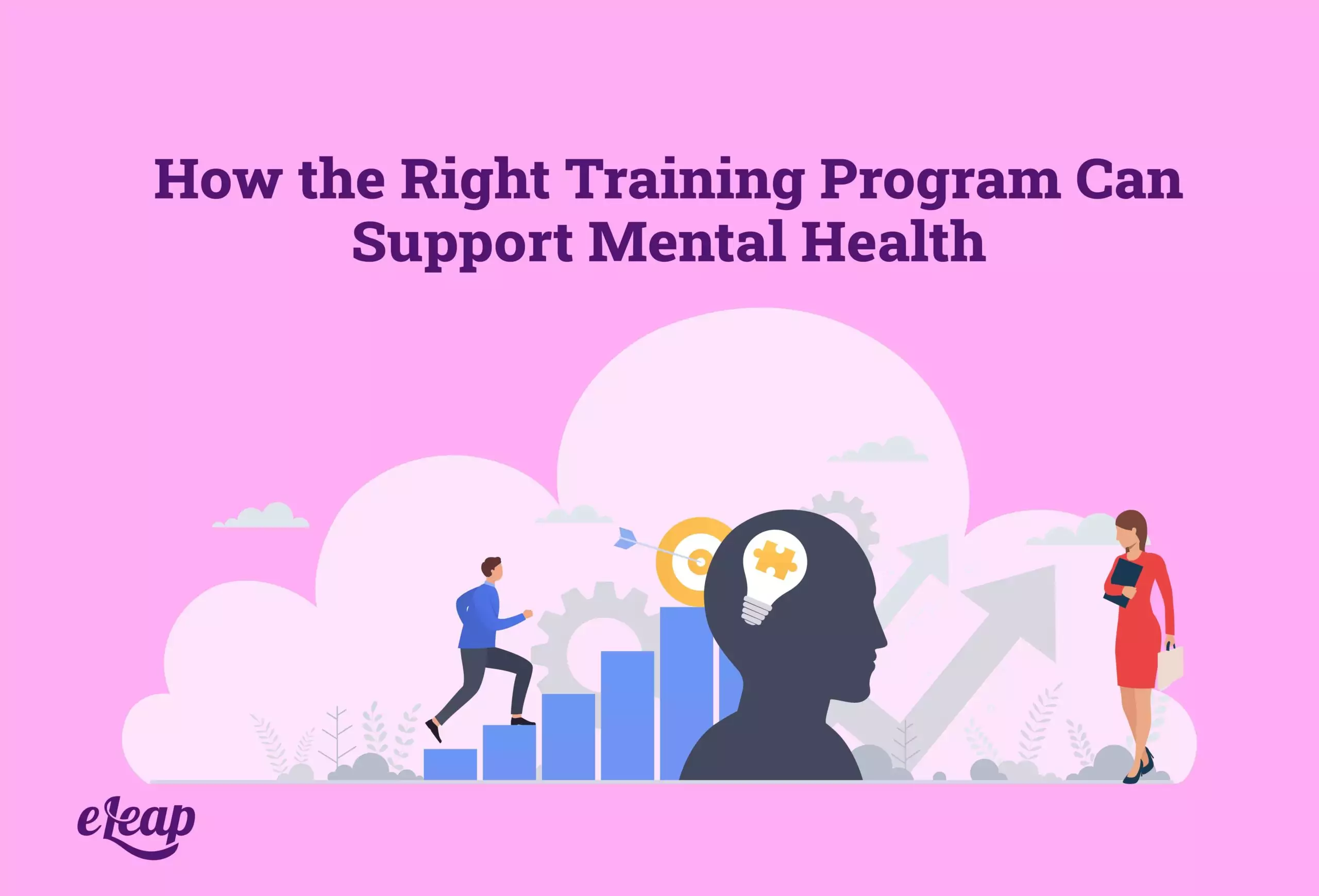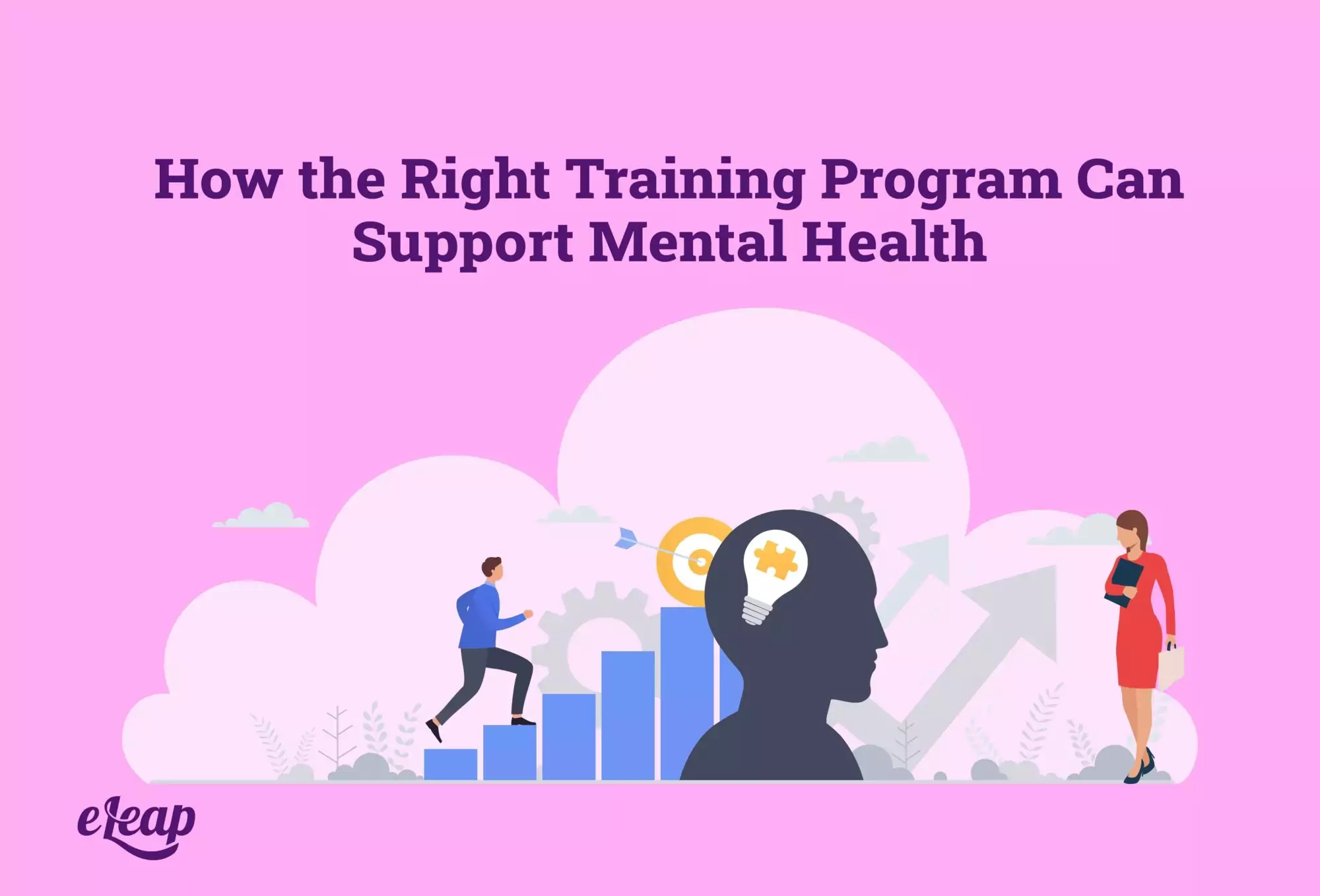How the Right Training Program Can Support Mental Health

Did you know that many Americans consider their jobs one of the primary sources of stress in their lives? In fact, the American Institute of Stress conducted surveys and uncovered that 25% of people considered it their NUMBER ONE source of stress.
It may seem hard to believe, but stressed employees cost companies over $300 billion every year. These losses come in the form of lost work time because of missed days, high turnover rates, accidents from stress, and several other elements.
When the pandemic hit, huge changes had to be made in many major industries, which amplified the stress in the workplace. Role changes, shifts from office to remote work, and responsibility changes were enough to shift the entire landscape of our workforce.
Many companies found it difficult to sustain productivity and ended up disappearing permanently. However, organizations are focusing on employees’ mental health, which is leading the way.
It’s been a long time in the making, but finally, organizations are jumping on board regarding a focus on employee mental wellness. Over the last few years, the growing opinion has shifted toward the need for this focus. The pandemic seemed to send it into overdrive.
In the same surveys, many employees stated that they needed assistance when managing their stress and anxiety. This is how a quality employee onboarding program can help support them in this effort.
When you’re able to offer this type of training, you can teach employees to cope with their stress levels in a much healthier way. This article will discuss some important strategies you can take to make this a part of your training program.

Stress Management In Your LMS
Stress management is important in your LMS because it begins dealing with this issue from the start. Don’t be afraid to get your veteran employees involved with this as well.
Employees don’t have to be brand new to engage with your LMS platform for this purpose. By allowing employees at every level to take advantage of this element, you’ll have a much stronger-minded and satisfied workforce overall.
Make Blocks of Time
Many employees have to deal with workforce training on top of other jobs. This ends up being incredibly overwhelming when they have to manage both. Another problem could be that the training, when mixed in with the real duties of work, doesn’t get taken seriously.
What’s the solution to this challenge?
When you’re able to block sections of time off for team members’ training, it pays off in two ways:
- Training doesn’t cause extra stress for your team members
- Employees end up digesting the course material much better
If this is a strategy you end up deploying, make sure you create specific times for each task. You don’t want this to become a bridge to an uneven amount of time spent on one task and not the other.
Provide Wellness Courses
Because so many people seem to need help with handling their stress, it makes sense to offer a training regimen that provides courses on stress management. You can even include other wellness training through the right LMS platform.
This type, of course, would probably be best suited by prebuilt content directly from your provider, making it easy to slip into your current offerings. The content could cover health, sleep, focus, stress, and emotional intelligence.
By choosing to use a pre-built model, you save significant time for your L&D team while they’re busy doing other important work. When you’re offering this type of course through a comprehensive LMS platform, it’s also much easier to keep track of who enrolls, who completes modules, as well as other important metrics for you to analyze.
This makes it incredibly easy to compare your normal in-house training or your old training manuals to see which one is driving better results. Having all of this data is incredibly powerful and allows you to make well-informed decisions that help you make improving your learning and training a continuous effort.
If you make the decision to include a wellness course, you must be sure your team members know that this is an option. Consider the following ideas for improving your workforce’s mental wellness:
- Schedule automatic email reminders of when the courses take place
- Put reminders about the wellness courses on your company tack board so everyone can see the options they have as soon as they log on
- Make sure you tell management about the availability of this course so they can pass the message on to the employees who would benefit the most
- During onboarding training, be sure to pass along information about wellness resources and how to access them on the platform
Because the pool of remote workers is bigger than it’s ever been before, you must make homebound employees aware of their ability to access the course. Make sure you empower your team and push them to take part in the lessons at home by using mobile apps. This allows them to take advantage of these rich resources anytime.
Training Your Leaders to Identify Stress
A good leader should be able to recognize stress in their employees. This is a very important skill that any leader has to ensure the wellness of their team members.
It can be difficult to manage stress at an organization if you don’t know the source of that stress. Working from home can make things especially stressful, so you or other team leaders must keep a constant check on remote workers.
This is especially true if they feel isolated from the team. The last thing you want is to alienate them and make them feel like they’re on an island.
Anonymous surveys can also be helpful. This is an additional way to identify sources of stress within the office and encourages employees to speak freely without being persecuted or looked down upon.
The open conversation should always be considered regardless, and let your team know that you’re there whenever they need to talk. This could be a powerful strategy to use, especially considering the emphasis placed on mental wellness by Gen Z and other young people.
New entrants to the workforce are looking for positive sources of employment, and if you can be there to fill the gap, it could net you some great young talent.